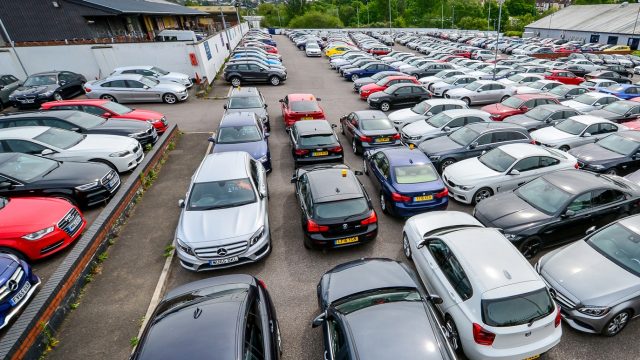Amid the hum of industrial machinery and the smell of rust and oil, scrap yards offer more than just recycling. They hide fragments of automotive history, vehicles that once shaped dreams, technology, and culture. In these vast yards, we find more than steel and aluminium. We find stories. We find connection. Every discarded car carries with it design milestones, engineering breakthroughs or cultural significance.
The Role of Scrap Yards in Automotive Heritage
Scrap yards perform a crucial function. They take end‑of‑life vehicles and break them down for raw materials: steel, copper, aluminium, plastics. According to standards, over 85 per cent of a modern car is recyclable. Each component pulled apart leaves fewer parts heading to landfill. The process helps conserve limited resources and supports the circular economy.https://www.carremovalsydney.com.au/
Becoming a part of that cycle are vehicles that once made history. A classic 1970s Holden Monaro or an early 1990s Toyota Supra may end up among sets of tyres and mangled panels. These cars, though no longer on the road, still hold value beyond scrap prices.
Unearthing Icons Among Scrap
Picture entering a yard known for abundance and variety. Amid piles of metal, enthusiasts find hidden treasures. A decadeago, a battered Datsun 240Z was found, still intact enough for restoration. In Europe, a forgotten Mercedes‑Benz 300 SL ‘gullwing’ was recovered from obscurity, leading to a multimillion‑dollar restoration.
In Australia, automotive clubs frequently scout for parts and complete models. Even when vehicles appear beyond repair, their chassis, trim, or badges can be valuable. Collectors carefully assess rust spots, structural condition and rarity factors.
Why These Lost Vehicles Matter
There are several reasons for affection and care when these vehicles surface:
-
Technological breakthroughs. Cars like the Datsun 240Z introduced six‑cylinder performance at a lower price point. Others pioneered electronic fuel injection or emission controls. These represent phases in motoring evolution.
-
Cultural symbols. The Ford Falcon GT‑H0 and Torana A9X embodied a national spirit tied to motorsport and independence. As Australian icons, their recovery keeps memories alive.
-
Design influence. Early Japanese sports cars shaped automotive tastes during the 1960s‑70s. Later, Japanese luxury models redefined refinement in the 1980s‑90s.
-
Educational value. Preserving old parts helps students and engineers understand mechanical systems without simulation.
The Art of Rescuing a Legend
Finding a prized automobile starts with knowledge. Enthusiasts monitor online ads, classifieds and attend auctions. They inspect registration history, body integrity, engine condition, and parts availability. A research step involves checking build records and serial numbers. These details shape decisions about restoration costs and feasibility.
Once a vehicle is acquired, builders begin a process that may involve:
-
Disassembly – cataloguing parts and separating salvageable items.
-
Assessment – engine rebuilds or replacement, body panel repair or remanufacture, electrical overhauls.
-
Repairs – skilled metalwork, panel beating, welding.
-
Refinishing – primer, paint, trim, upholstery.
-
Re‑engineering – sometimes improving brakes, suspension or electronics while maintaining authenticity.
Restoration can take months or years but revives both machine and story.
Scrap Yards as Living Archives
Rather than static museums, scrap yards become living archives. They offer materials and data. Visitors see snapshots of industrial design and manufacturing methods. Some yards specialise in European or American imports, while others serve local markets with roadworthy panels or engines.
Educational tours are not unheard of. Mechanics and students gain insight into how body panels are stamped, how layouts evolved from carburettors to fuel injection, or how safety features were retrofitted over years.
Sustainability and History Hand in Hand
Recycling in scrap yards supports sustainability goals. Most metals can be melted down and reused without losing properties. Steel and aluminium from cars can return to automotive bodies or construction materials. Recycling one tonne of steel saves around 1.5 tonnes of iron ore and 0.5 tonnes of coal. That helps lower greenhouse gas emissions.
At the same time, segments of old vehicles remain. Engines too rare or cracked for reuse are photographed, logged and disposed of safely. Décor features like wood trim or leather seats may inspire replicas or be re‑upholstered in other vehicles.
Spotlight on Discoveries
-
A barn‑found 1967 Mustang Fastback was rescued in the United States. After a ten‑year project, it returned to concours standard.
-
In the United Kingdom, a Jaguar E‑Type shed behind trees was recovered. It sold for over GBP 200,000 after restoration.
-
In Australia, mechanics recovered a 1975 Leyland P76 V8 custom cruiser with original logbooks, parts, and receipts—an exceptional time capsule.
Such finds highlight how scrap yards can serve as agents of revival and protection.
How Enthusiasts Navigate Scrap Yards
For those interested in sourcing parts or cars, these tips help:
-
Plan visits – check yard opening hours, stock lists or available dump days.
-
Inspect thoroughly – carry a torch, magnet (for panel thickness), tape measure and basic tools.
-
Chat with staff – they often know incoming stock schedules or special vehicles.
-
Bring help – large items may require more hands or a forklift.
-
Document – record serial numbers or timestamps in case of future sales or enquiries.
By combining grit with enthusiasm, meaningful recoveries become possible.
Rediscovering Purpose with Car Removal Sydney
When a vehicle reaches the end of its road‑worthy life, that is not the end of its contribution. Services like Car Removal Sydney offer collection, dismantling and responsible recycling. Car owners can arrange on‑site pick‑up, provide documentation, and have the vehicle removed efficiently. Meanwhile, useful parts—those enduring trim pieces, engines or rare badges—can be passed into skilled hands at Car Wreckers Sydney, contributing to restoration projects. By linking removal and wreckers, a continuous chain forms: vehicle parts live on, preserving design and history otherwise lost to time.
Conclusion
Scrap yards tell stories of progress, culture and innovation. They hold keys to histories that would otherwise rust away. By rescuing lost legends, enthusiasts, historians and mechanics preserve more than machines. They retain memories of technology, craftsmanship and identity. Whether someone is searching for parts, discovering rare models or participating in restoration projects, these yards are places of potential and memory. They remind us that even in decay, there is opportunity to rebuild, learn and appreciate.
Through responsible methods—from thoughtful removal to active wrecking—it is possible to conserve the best of automotive heritage while supporting a circular economy. Even lost legends from scrapyards may yet be driven again, or at least remembered, thanks to care, skill and a bit of metal magic.










